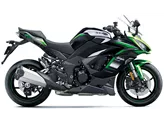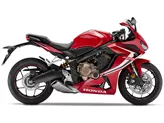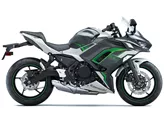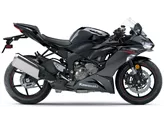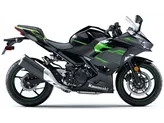Kawasaki Z1000SX 2016 vs. Kawasaki Ninja 650 2017

Kawasaki Z1000SX 2016

Kawasaki Ninja 650 2017
Overview - Kawasaki Z1000SX 2016 vs Kawasaki Ninja 650 2017
The Kawasaki Z1000SX 2016 and the Kawasaki Ninja 650 2017 are both motorcycles from Kawasaki, but they have distinct differences in terms of their technical specifications and strengths.
Starting with the Kawasaki Z1000SX 2016, it is a sport touring motorcycle with a powerful engine. It features an in-line, 4-cylinder engine with a displacement of 1043cc. The engine produces 142 HP of power and 111 Nm of torque, providing a confident and powerful ride. The compression ratio is 11.8, which contributes to the engine's performance. The Z1000SX has a chain transmission and a 4-stroke engine.
In terms of suspension, the Z1000SX has an upside-down telescopic fork at the front and adjustable compression, preload, and rebound at the rear. This allows for a comfortable and customizable riding experience. The front brakes are double disk with radial, monoblock, and petal technology, ensuring reliable stopping power. The Z1000SX also features advanced rider assistance systems such as traction control.
In terms of dimensions and weights, the Z1000SX has a front tire width of 120mm and a diameter of 17 inches, while the rear tire has a width of 190mm and the same diameter. The wheelbase is 1445mm, and the seat height is 822mm, providing a comfortable riding position. The fuel tank capacity is 19 liters, allowing for longer rides without frequent refueling.

Kawasaki Z1000SX 2016
The strengths of the Z1000SX include its confident and powerful engine, fairing suitable for touring, sporty design, good electronic features such as traction control, cornering ABS, and a well-integrated pannier system. It also offers a pleasantly comfortable riding experience.
However, the Z1000SX does have some weaknesses. It may have somewhat stiff handling in tight curves, which can affect maneuverability. Additionally, the instruments are not optimally backlit, which may make them less visible in certain lighting conditions.
Moving on to the Kawasaki Ninja 650 2017, it is a supersport motorcycle with a transparent chassis for a sporty look. It features an in-line, 2-cylinder engine with a displacement of 649cc. The engine produces 68.2 HP of power and 65.7 Nm of torque, providing a playful and good-natured ride. The compression ratio is 10.8, which contributes to the engine's resilience. Similar to the Z1000SX, the Ninja 650 has a chain transmission and a 4-stroke engine.
In terms of suspension, the Ninja 650 has a telescopic fork at the front and adjustable preload at the rear. This allows for a comfortable and customizable riding experience. The front brakes are double disk with petal technology, ensuring excellent braking performance. The Ninja 650 also features advanced rider assistance systems such as ABS.

Kawasaki Ninja 650 2017
In terms of dimensions and weights, the Ninja 650 has a front tire width of 120mm and a diameter of 17 inches, while the rear tire has a width of 160mm and the same diameter. The wheelbase is 1410mm, and the seat height is 790mm, providing a comfortable riding position for riders of different heights. The fuel tank capacity is 15 liters, which is slightly smaller than the Z1000SX.
The strengths of the Ninja 650 include its transparent chassis for a sporty look, playful and good-natured handling, excellent brakes, and sharp looks inspired by the ZX-10R. The engine is also resilient, providing a reliable performance.
However, the Ninja 650 does have some weaknesses. The sound from the stock exhaust is relatively quiet, which may not appeal to riders looking for a more aggressive sound. Additionally, the engine may exhibit slight vibrations, which can be felt during the ride.
In conclusion, the Kawasaki Z1000SX 2016 and the Kawasaki Ninja 650 2017 are both motorcycles with their own strengths and weaknesses. The Z1000SX offers a confident and powerful engine, suitable for touring, and a sporty design. It also has good electronic features and a well-integrated pannier system. On the other hand, the Ninja 650 offers a transparent chassis for a sporty look, playful handling, excellent brakes, and sharp looks. It also has a resilient engine. However, the Z1000SX may have somewhat stiff handling in tight curves and less optimal backlit instruments, while the Ninja 650 may have a quieter sound from the stock exhaust and slight vibrations in the engine.
Technical Specifications Kawasaki Z1000SX 2016 compared to Kawasaki Ninja 650 2017
Pros and Cons in comparison
Pros and Cons in comparison
Kawasaki Z1000SX 2016
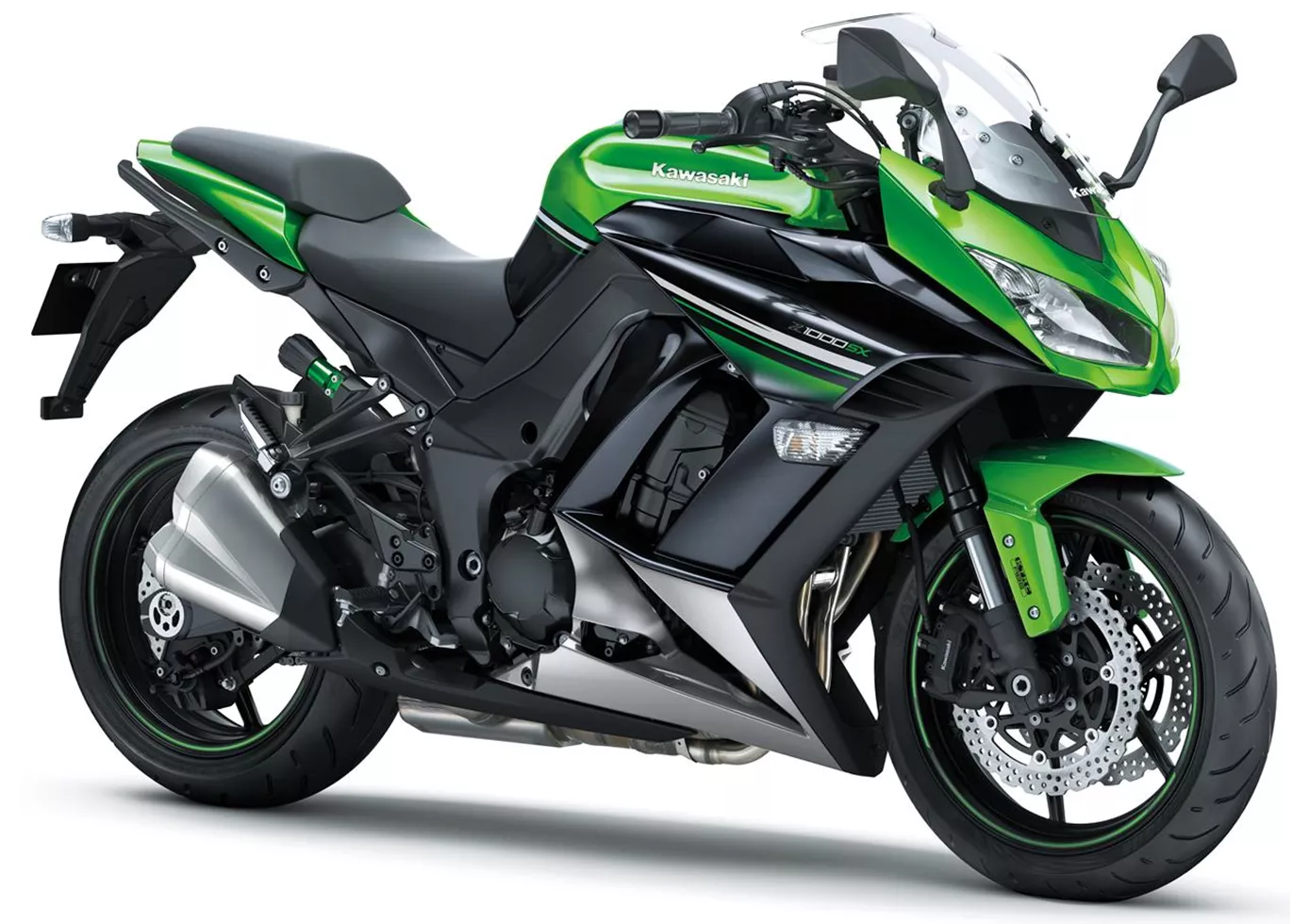
The current model of the Kawasaki Z1000SX is already a wonderfully balanced motorbike that scores points with its sporty charms as well as its comfort features and long-distance capability. However, the new 2017 model makes everything even better: refined wind protection, a more comfortable seat, better accessories and a host of electronic helpers that make riding safe and confident even in adverse conditions. Nothing had to be changed in the sporty character of the powerful engine, and the look with the LED headlights and the many edges is almost on the level of a super sports bike - all in all, an absolutely successful further development.
Kawasaki Ninja 650 2017

The Ninja 650 firmly stamps its predecessor (Er-6f). The engine has mastered the Euro 4 hurdle well and serves up a very usable 68 hp, the chassis is simply great for this class, and the weight reduction of 18(!) kilos compared to the ER-6f justifies reverent nods.
Price Comparison Avarage Market Price Kawasaki Z1000SX vs Kawasaki Ninja 650
There are a few key differences between a Kawasaki Z1000SX 2016 and a Kawasaki Ninja 650 2017. In terms of price, the actual average price of a Kawasaki Z1000SX 2016 is about 39% higher. A Kawasaki Z1000SX 2016 experiences a loss of 470 GBP in one year and 380 GBP in two years of ownership. This is offset by a loss of 390 GBP and 500 GBP for a Kawasaki Ninja 650 2017. Compared to Kawasaki Ninja 650 2017 there are more Kawasaki Z1000SX 2016 bikes available on the 1000PS.de Marketplace, specifically 8 compared to 7. With 96 days it takes the same amount of time to sell a Kawasaki Z1000SX or a Kawasaki Ninja 650. Since model year 2011 1000PS.de editors have written 14 reviews for the Kawasaki Z1000SX and 20 reviews for the Kawasaki Ninja 650 since model year 2017. The first review for the Kawasaki Z1000SX was published on 05/10/2010 and now has more than 9,900 views. This compares to more than 79,600 views for the first review on Kawasaki Ninja 650 published on 04/10/2016.




